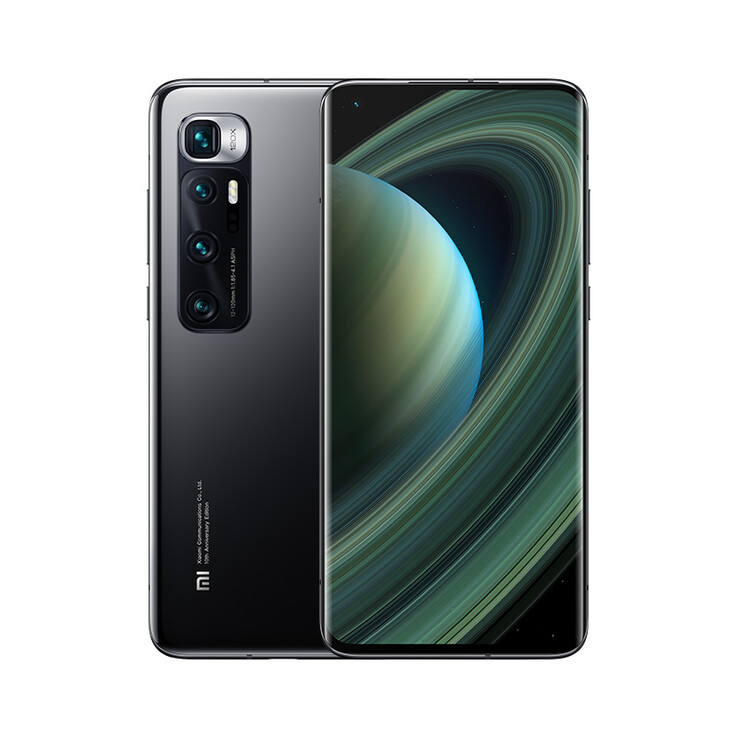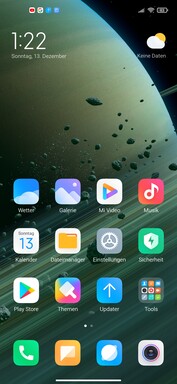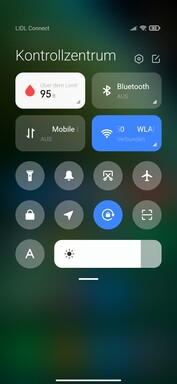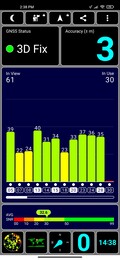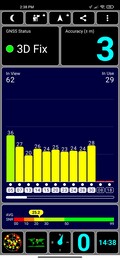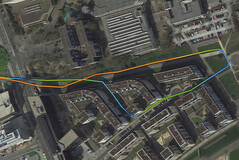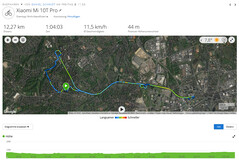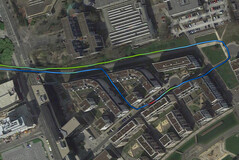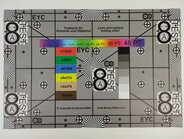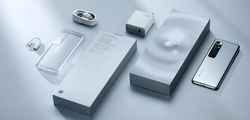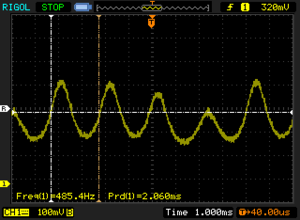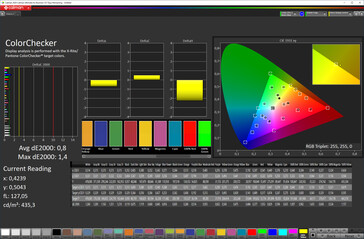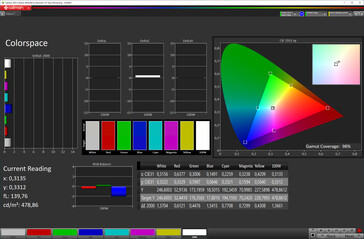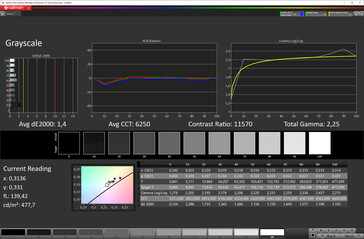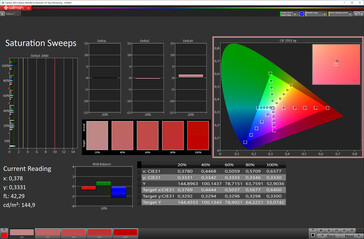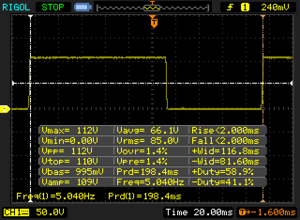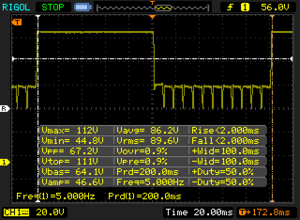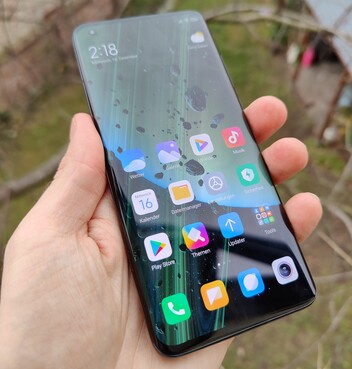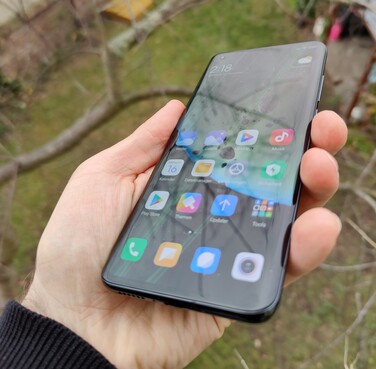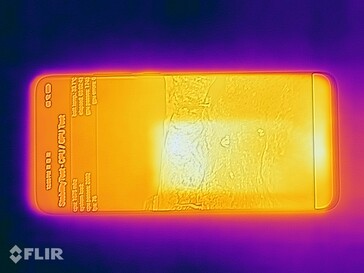Xiaomi Mi 10 Ultra smartphone review - Is the hype around the Xiaomi phone justified?
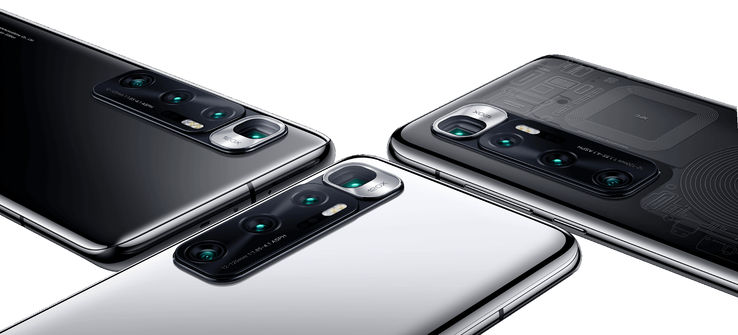
With its latest flagship, the Mi 10 Ultra, Xiaomi is once again aiming for the smartphone throne - but, unfortunately, only on the Chinese market. Since the Mi 11 and Mi 11 Pro are already in the works, a delayed release of the Mi 10 Ultra in Europe is unlikely.
The technical specs are at least worthy of an Android champion in 2020. The 6.67-inch HDR OLED panel offers a refresh rate of 120 Hz and is supposed to provide a brightness of over 800 nits. This is accompanied by a Qualcomm Snapdragon 865 with the LiquidCool 2.0 cooling system, an extreme charging speed of up to 120 watts, and a quad camera with 120x zoom.
The Ultra model with 8 GB of RAM and 256 GB of UFS storage costs about 700 Euros (~$855) via importers, and the top model with 16 GB and 512 GB costs about 1,000 Euros (~$1,222).
Possible competitors in comparison
Rating | Date | Model | Weight | Drive | Size | Resolution | Price |
|---|---|---|---|---|---|---|---|
| 88.3 % v7 (old) | 12 / 2020 | Xiaomi Mi 10 Ultra SD 865, Adreno 650 | 223 g | 128 GB UFS 3.1 Flash | 6.67" | 2340x1080 | |
| 89.6 % v7 (old) | 02 / 2021 | Samsung Galaxy Note20 Ultra Exynos 990, Mali-G77 MP11 | 208 g | 256 GB UFS 3.1 Flash | 6.90" | 3088x1440 | |
| 89.3 % v7 (old) | 07 / 2020 | Huawei P40 Pro Plus Kirin 990 5G, Mali-G76 MP16 | 226 g | 512 GB UFS 3.0 Flash | 6.58" | 2640x1200 | |
| 88.2 % v7 (old) | 04 / 2020 | Xiaomi Mi 10 Pro SD 865, Adreno 650 | 208 g | 256 GB UFS 3.0 Flash | 6.67" | 2340x1080 | |
| 88.5 % v7 (old) | 04 / 2020 | OnePlus 8 Pro SD 865, Adreno 650 | 199 g | 256 GB UFS 3.0 Flash | 6.78" | 3168x1440 |
Case - Mi 10 Ultra with hole punch
The Mi 10 Ultra is available with a ceramic case in "Obsidian Black" and "Mercury Silver" as well as in a transparent edition. On the back, the quad-camera module immediately catches the eye, and it partially shows a different color. The build quality meets the highest standards as you would expect from a flagship smartphone in 2020.
The hole punch on the front ensures that the Xiaomi phone is still relatively compact in the user's hand despite the pronounced screen diagonal of 6.67 inches, and it enables the Mi 10 phone to have a very efficient screen-to-body ratio of almost 90%.
There's no specified protection against water ingress, but Xiaomi uses a P2i nanocoating, just like in the other Mi 10 models, so that the high-end smartphone should at least be protected in a rain shower.
Connectivity - Xiaomi phone with dual SIM
The internal UFS 3.1 storage in our review sample has a capacity of 128 GB, but the user only has 107 GB available out of the box. Users who find the storage space to be insufficient will have to choose the 256 GB or the 512 GB version, since the Mi 10 Ultra doesn't have space for an additional micro SD card.
Peripheral devices can also be connected via the USB-C port using an OTG adapter. However, the USB interface only transfers data according to the 2.0 standard. The Xiaomi phone also has Bluetooth 5.1 and an NFC chip. However, a Play Protect certification is not available, so that payment services, such as Google Pay, probably won't work smoothly.
Software - Xiaomi smartphone with MIUI 12
The operating system of the Xiaomi flagship is based on Android 10, and our test sample, which was flashed with the stable multi-language firmware from Xiaomi.eu that includes the Play Store, has the security patch level of September 2020.
However, the Mi 10 Ultra doesn't support Google services like the Play Store out of the box. Instead, Chinese services and Xiaomi's own services are used. Unlike Huawei's smartphones, you don't have to do without Google services even with the CN version; they can simply be installed later.
Communication and GPS - Mi 10 Ultra with Wi-Fi 6
Thanks to Wi-Fi 6 and MU-MIMO technology, the integrated WLAN module works at very high transfer rates in the 2.4 GHz and 5 GHz frequency ranges, whereby the transmission power drops a bit. The signal between the Mi 10 Ultra and our Netgear Nighthawk AX12 reference router is relatively stable.
The dual-SIM smartphone accesses mobile Internet with up to two nano SIM cards and at 5G speeds. For a smartphone in this price range, the number of LTE frequency bands that the Xiaomi phone supports is low. The Mi 10 Ultra can only access 14 LTE bands. Neither band 20 nor band 28 are available for use in Germany.
| Networking | |
| iperf3 transmit AX12 | |
| Huawei P40 Pro Plus | |
| OnePlus 8 Pro | |
| Xiaomi Mi 10 Pro | |
| Samsung Galaxy Note20 Ultra | |
| Xiaomi Mi 10 Ultra | |
| iperf3 receive AX12 | |
| Huawei P40 Pro Plus | |
| Xiaomi Mi 10 Ultra | |
| Xiaomi Mi 10 Pro | |
| Samsung Galaxy Note20 Ultra | |
| OnePlus 8 Pro | |
In order to assess the positioning accuracy of our test device in practice, we log a route with the Garmin Edge 500 GPS bike computer for comparison purposes, as usual. The position is determined via GPS (L1 + L5), Galileo, GLONASS, BeiDou, and SBAS. The satellite fix outdoors is fast with an accuracy of three meters, and the Mi 10 Ultra even manages to determine its position within buildings quite quickly.
Minor inaccuracies are visible in the course of the route, but the positioning level is more than sufficient for navigation.
Telephone and call quality - Xiaomi phone with VoLTE
Call quality is at a good level. We couldn't discover a Wi-Fi calling option in the settings, and the Voice over LTE option, which allows voice calls via the 4G network, isn't supported with our SIM card in the Vodafone network - according to the manufacturer, dual-VoLTE is available in principle, though. There is no optional eSIM function.
Cameras - Xiaomi smartphone with quad-camera setup
The 20 MP front-facing camera sits in a hole punch in the upper left corner of the display. Selfies taken with the Xiaomi phone have good sharpness and nice colors. However, the front camera only manages videos in 1080p and only at 30 fps. On the other hand, videos can be recorded with the main camera in 8K resolution at 30 frames per second or in UHD resolution at up to 60 fps.
The 48-megapixel sensor of the main camera with an equivalent 25 mm focal length offers an aperture of f/1.85 and OIS. The results are worthy of a 2020 high-end smartphone and are overall very good. However, sharpness could be a bit higher in some situations at the edges of the pictures in particular.
The Mi 10 Ultra also shows its strengths in terms of zoom. The advertised maximum magnification of 120x is only achieved via digital magnification, but the 48 MP periscope zoom lens offers 5x optical magnification, and the 12 MP telephoto camera provides 2x optical magnification, so that the pictures taken with the Mi 10 Ultra are quite impressive up to a zoom range of 10x.
The same applies to the 20 MP ultra wide-angle camera. The photos taken with an equivalent 12 mm focal length offer considerably less details and more image errors than the main camera, but sharpness and color reproduction are at a decent level.
Note: A detailed camera comparison between the Mi 10 Ultra and the high-end competition will soon be available on Notebookcheck.
Image comparison
Choose a scene and navigate within the first image. One click changes the position on touchscreens. One click on the zoomed-in image opens the original in a new window. The first image shows the scaled photograph of the test device.
Wide angleLow lightWide angleUltra wide angle5x zoom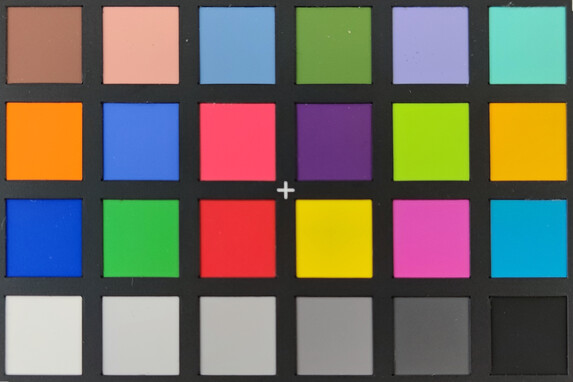

Accessories and warranty - Mi 10 Ultra with 120 watts
Xiaomi equips the Mi 10 Ultra with a 120-watt power adapter, a USB cable, and a protective case. Furthermore, our lender TradingShenzhen adds an EU adapter for the sockets used in this country as well as a USB-OTG adapter to the scope of delivery; this is a service provided by the lender.
The warranty is 12 months. In addition to the manufacturer's warranty, TradingShenzhen offers the option of sending the smartphone to a German shipping address in case of a warranty claim.
Input devices and handling - Xiaomi phone with 120 Hz
The capacitive multi-touchscreen with a sampling rate of 240 Hz detects inputs quickly and also precisely. Thanks to the refresh rate of 120 Hz, even fast scrolling movements are displayed very smoothly. As in the Mi 10 Pro, the vibration motor provides a crisp haptic feedback and operates at a high-quality level.
The optical fingerprint scanner underneath the OLED panel is one of the fastest on the market, but the sensor doesn't recognize fingers correctly from time to time. The 2D face-unlock function is also fast but relatively unsafe.
Display - Mi 10 Ultra with HDR OLED
Like the Mi 10 Pro, the AMOLED display of the Ultra variant offers a Full HD+ resolution of 2,340x1,080 pixels with a diagonal size of 6.67 inches. The pixel density of slightly below 400 PPI makes content look sharp, although a QHD panel offers visibly better sharpness when compared directly.
The OLED display's maximum brightness of 779 cd/m² is very good, and its distribution is very even at 96%. In our more realistic APL50 measurement, which simulates an even distribution of bright and dark areas on the AMOLED panel, it is an excellent 931 cd/m², so that HDR content should do well with the certified panel.
Since organic LEDs almost never shine at their theoretical maximum brightness, the Mi 10 Ultra's display brightness is also reduced accordingly via pulse width modulation. However, the flickering frequency is relatively high at 223 to 486 Hz, and a DC-dimming mode is also available.
| |||||||||||||||||||||||||
Brightness Distribution: 96 %
Center on Battery: 779 cd/m²
Contrast: ∞:1 (Black: 0 cd/m²)
ΔE ColorChecker Calman: 0.8 | ∀{0.5-29.43 Ø4.78}
ΔE Greyscale Calman: 1.4 | ∀{0.09-98 Ø5}
98% sRGB (Calman 2D)
Gamma: 2.25
CCT: 6250 K
| Xiaomi Mi 10 Ultra OLED, 2340x1080, 6.7" | Samsung Galaxy Note20 Ultra Dynamic AMOLED, 3088x1440, 6.9" | Huawei P40 Pro Plus OLED, 2640x1200, 6.6" | Xiaomi Mi 10 Pro Super AMOLED, 2340x1080, 6.7" | OnePlus 8 Pro AMOLED, 3168x1440, 6.8" | |
|---|---|---|---|---|---|
| Screen | -192% | -53% | -7% | 4% | |
| Brightness middle (cd/m²) | 779 | 860 10% | 672 -14% | 753 -3% | 796 2% |
| Brightness (cd/m²) | 779 | 878 13% | 672 -14% | 762 -2% | 779 0% |
| Brightness Distribution (%) | 96 | 96 0% | 95 -1% | 96 0% | 94 -2% |
| Black Level * (cd/m²) | |||||
| Colorchecker dE 2000 * | 0.8 | 4.5 -463% | 1.5 -88% | 0.9 -13% | 0.68 15% |
| Colorchecker dE 2000 max. * | 1.4 | 10.4 -643% | 3.2 -129% | 1.6 -14% | 1.55 -11% |
| Greyscale dE 2000 * | 1.4 | 2.4 -71% | 2.4 -71% | 1.5 -7% | 1.1 21% |
| Gamma | 2.25 98% | 2 110% | 2.25 98% | 2.24 98% | 2.237 98% |
| CCT | 6250 104% | 6466 101% | 6250 104% | 6415 101% | 6310 103% |
* ... smaller is better
Screen Flickering / PWM (Pulse-Width Modulation)
| Screen flickering / PWM detected | 485.4 Hz | ≤ 99 % brightness setting | |
The display backlight flickers at 485.4 Hz (worst case, e.g., utilizing PWM) Flickering detected at a brightness setting of 99 % and below. There should be no flickering or PWM above this brightness setting. The frequency of 485.4 Hz is relatively high, so most users sensitive to PWM should not notice any flickering. However, there are reports that some users are still sensitive to PWM at 500 Hz and above, so be aware. In comparison: 53 % of all tested devices do not use PWM to dim the display. If PWM was detected, an average of 8101 (minimum: 5 - maximum: 343500) Hz was measured. | |||
The analysis made with the spectrophotometer and the CalMAN software results in very low average delta E deviations from the sRGB color space of 0.8 (colors) and 1.4 (grayscales) in the "Original" display mode - the ideal range starts at values below 3. The sRGB color space is almost completely covered by the OLED panel.
Display Response Times
| ↔ Response Time Black to White | ||
|---|---|---|
| 4 ms ... rise ↗ and fall ↘ combined | ↗ 2 ms rise | |
| ↘ 2 ms fall | ||
| The screen shows very fast response rates in our tests and should be very well suited for fast-paced gaming. In comparison, all tested devices range from 0.1 (minimum) to 240 (maximum) ms. » 15 % of all devices are better. This means that the measured response time is better than the average of all tested devices (20.2 ms). | ||
| ↔ Response Time 50% Grey to 80% Grey | ||
| 4 ms ... rise ↗ and fall ↘ combined | ↗ 2 ms rise | |
| ↘ 2 ms fall | ||
| The screen shows very fast response rates in our tests and should be very well suited for fast-paced gaming. In comparison, all tested devices range from 0.165 (minimum) to 636 (maximum) ms. » 14 % of all devices are better. This means that the measured response time is better than the average of all tested devices (31.6 ms). | ||
Outdoor readability is possible without problems thanks to the bright and very high-contrast organic display - but only when using automatic brightness control. If the brightness sensor is turned off, the OLED panel only reaches a maximum brightness of 484 cd/m². The display's viewing angles are no cause for criticism either.
Performance - Xiaomi Mi 10 Ultra with the Snapdragon 865
With the Snapdragon 865, Xiaomi installs a powerful SoC that integrates a fast "Prime Core" at up to 2.84 GHz and three additional Cortex-A77-based performance cores at a clock frequency of up to 2.42 GHz. Four additional ARM Cortex-A55 cores have also been integrated to save power (1.8 GHz). A powerful Adreno 650 graphics unit is also installed in Qualcomm's SoC.
The high-end processor and the 8 GB of RAM installed in our review sample ensure a very good system performance in everyday use. The loading times of applications are quick thanks to the very fast UFS storage. The Mi 10 Ultra also delivers predictably good results in the benchmarks.
| AnTuTu v8 - Total Score (sort by value) | |
| Xiaomi Mi 10 Ultra | |
| Samsung Galaxy Note20 Ultra | |
| Huawei P40 Pro Plus | |
| Xiaomi Mi 10 Pro | |
| OnePlus 8 Pro | |
| Average Qualcomm Snapdragon 865 (527301 - 631025, n=24) | |
| Jetstream 2 - 2.0 Total Score | |
| Average of class Smartphone (23.8 - 387, n=149, last 2 years) | |
| Huawei P40 Pro Plus (Huawei Browser 10.1.2.322) | |
| Xiaomi Mi 10 Pro (Chrome 81) | |
| Average Qualcomm Snapdragon 865 (45.2 - 77, n=20) | |
| OnePlus 8 Pro (Chrome 80) | |
| Samsung Galaxy Note20 Ultra (Chrome 84) | |
| Xiaomi Mi 10 Ultra (Mi Browser V12) | |
| Octane V2 - Total Score | |
| Average of class Smartphone (2228 - 121337, n=197, last 2 years) | |
| Xiaomi Mi 10 Ultra (Mi Browser V12) | |
| OnePlus 8 Pro (Chrome 80) | |
| Huawei P40 Pro Plus (Huawei Browser 10.1.2.322) | |
| Xiaomi Mi 10 Pro (Chrome 81) | |
| Average Qualcomm Snapdragon 865 (14606 - 31224, n=23) | |
| Samsung Galaxy Note20 Ultra (Chrome 84) | |
| Mozilla Kraken 1.1 - Total | |
| Xiaomi Mi 10 Ultra (Mi Browser V12) | |
| Samsung Galaxy Note20 Ultra (Chrome 84) | |
| Average Qualcomm Snapdragon 865 (1623 - 2911, n=24) | |
| Xiaomi Mi 10 Pro (Chrome 81) | |
| OnePlus 8 Pro (Chrome 80) | |
| Huawei P40 Pro Plus (Huawei Browser 10.1.2.322) | |
| Average of class Smartphone (257 - 28190, n=154, last 2 years) | |
| WebXPRT 3 - Overall | |
| Average of class Smartphone (38 - 380, n=31, last 2 years) | |
| Huawei P40 Pro Plus (Huawei Browser 10.1.2.322) | |
| Xiaomi Mi 10 Ultra (Mi Browser V12) | |
| Average Qualcomm Snapdragon 865 (97 - 127, n=23) | |
| OnePlus 8 Pro (Chrome 80) | |
| Samsung Galaxy Note20 Ultra (Chrome 84) | |
| Xiaomi Mi 10 Pro (Chrome 81) | |
* ... smaller is better
| Xiaomi Mi 10 Ultra | Samsung Galaxy Note20 Ultra | Huawei P40 Pro Plus | Xiaomi Mi 10 Pro | OnePlus 8 Pro | Average 128 GB UFS 3.1 Flash | Average of class Smartphone | |
|---|---|---|---|---|---|---|---|
| AndroBench 3-5 | 1% | 33% | 12% | -4% | 6% | 70% | |
| Sequential Read 256KB (MB/s) | 1674 | 1782 6% | 1802 8% | 1739 4% | 1627 -3% | 1569 ? -6% | 2228 ? 33% |
| Sequential Write 256KB (MB/s) | 740 | 802 8% | 911 23% | 750 1% | 730 -1% | 768 ? 4% | 1852 ? 150% |
| Random Read 4KB (MB/s) | 209.9 | 186.7 -11% | 324.1 54% | 264.9 26% | 208.3 -1% | 244 ? 16% | 296 ? 41% |
| Random Write 4KB (MB/s) | 219.5 | 217.7 -1% | 318.9 45% | 258.5 18% | 197.7 -10% | 243 ? 11% | 339 ? 54% |
Games - The Mi 10 Ultra can game
The Adreno 650 graphics card in Xiaomi's phone makes it possible to render even more complex 3D games smoothly. The Mi 10 Ultra's integrated position sensors and touchscreen also work without problems during gaming.
Emissions - Xiaomi Mi 10 Ultra remains cool
Temperature
The case of the Xiaomi phone only heats up a bit under load. The temperatures that we measured are within a harmless range at a maximum of 34.3 °C (~94 °F).
| 3DMark - Wild Life Stress Test Stability | |
| Huawei P40 Pro Plus | |
| Xiaomi Mi 10 Ultra | |
| Samsung Galaxy Note20 Ultra | |
(+) The maximum temperature on the upper side is 34.3 °C / 94 F, compared to the average of 35.2 °C / 95 F, ranging from 21.9 to 247 °C for the class Smartphone.
(+) The bottom heats up to a maximum of 32 °C / 90 F, compared to the average of 34 °C / 93 F
(+) In idle usage, the average temperature for the upper side is 25.5 °C / 78 F, compared to the device average of 32.9 °C / 91 F.
Speakers
The Mi 10 Ultra uses two speakers with a maximum volume of over 90 dB. Our measurements show a linear frequency response for the mids in the Xiaomi phone, and the super high tones only drop slightly as well.
Those who want a bass-rich sound output can resort to wired or wireless headphone solutions via USB-C and the Bluetooth 5.1 standard. Music fans can enjoy an extensive codec palette that includes aptX HD, AAC, and LDAC.
Xiaomi Mi 10 Ultra audio analysis
(+) | speakers can play relatively loud (90.8 dB)
Bass 100 - 315 Hz
(-) | nearly no bass - on average 28% lower than median
(±) | linearity of bass is average (7.4% delta to prev. frequency)
Mids 400 - 2000 Hz
(±) | reduced mids - on average 5% lower than median
(+) | mids are linear (4.1% delta to prev. frequency)
Highs 2 - 16 kHz
(+) | balanced highs - only 4% away from median
(+) | highs are linear (3.4% delta to prev. frequency)
Overall 100 - 16.000 Hz
(±) | linearity of overall sound is average (17.6% difference to median)
Compared to same class
» 13% of all tested devices in this class were better, 8% similar, 79% worse
» The best had a delta of 11%, average was 35%, worst was 134%
Compared to all devices tested
» 34% of all tested devices were better, 8% similar, 58% worse
» The best had a delta of 4%, average was 24%, worst was 134%
OnePlus 8 Pro audio analysis
(+) | speakers can play relatively loud (84.4 dB)
Bass 100 - 315 Hz
(-) | nearly no bass - on average 70.2% lower than median
(+) | bass is linear (0% delta to prev. frequency)
Mids 400 - 2000 Hz
(-) | nearly no mids - on average 70.2% lower than median
(+) | mids are linear (0% delta to prev. frequency)
Highs 2 - 16 kHz
(-) | nearly no highs - on average 70.2% lower than median
(+) | highs are linear (0% delta to prev. frequency)
Overall 100 - 16.000 Hz
(-) | overall sound is not linear (123.4% difference to median)
Compared to same class
» 92% of all tested devices in this class were better, 7% similar, 1% worse
» The best had a delta of 11%, average was 35%, worst was 134%
Compared to all devices tested
» 98% of all tested devices were better, 2% similar, 0% worse
» The best had a delta of 4%, average was 24%, worst was 134%
Battery life - Mi phone with 120 watts
Energy consumption
When it comes to fast-charging technology, no other phone can beat the Mi 10 Ultra. Xiaomi's flagship comes with a 120-watt power adapter already in the box that charges the two 2,250 mAh batteries within 23 minutes - we can also confirm this manufacturer's claim in the test. Wireless charging is also supported at 50 watts, so a charge should take about 45 minutes. For comparison purposes, an Apple iPhone 12 Pro charges at a maximum of 20 watts using a cable.
Peripherals can be charged at up to 10 watts via Reverse Wireless Charging.
| Off / Standby | |
| Idle | |
| Load |
|
Key:
min: | |
| Xiaomi Mi 10 Ultra 4500 mAh | Samsung Galaxy Note20 Ultra 4500 mAh | Huawei P40 Pro Plus 4200 mAh | Xiaomi Mi 10 Pro 4500 mAh | OnePlus 8 Pro 4510 mAh | Average Qualcomm Snapdragon 865 | Average of class Smartphone | |
|---|---|---|---|---|---|---|---|
| Power Consumption | 10% | 4% | 19% | -81% | -28% | -13% | |
| Idle Minimum * (Watt) | 0.82 | 0.65 21% | 0.82 -0% | 0.61 26% | 2.2 -168% | 1.133 ? -38% | 0.842 ? -3% |
| Idle Average * (Watt) | 1.67 | 1.06 37% | 2.06 -23% | 1.19 29% | 3.3 -98% | 2.23 ? -34% | 1.439 ? 14% |
| Idle Maximum * (Watt) | 1.69 | 1.49 12% | 2.07 -22% | 1.23 27% | 3.7 -119% | 2.45 ? -45% | 1.624 ? 4% |
| Load Average * (Watt) | 4.33 | 4.91 -13% | 2.99 31% | 4.18 3% | 5.9 -36% | 5.26 ? -21% | 7.03 ? -62% |
| Load Maximum * (Watt) | 9.72 | 10.29 -6% | 6.64 32% | 8.53 12% | 8.3 15% | 9.68 ? -0% | 11.3 ? -16% |
* ... smaller is better
Battery life
The Mi 10 Ultra lasts a solid 12 hours in our WLAN test with an adjusted display brightness of 150 cd/m².
| Xiaomi Mi 10 Ultra 4500 mAh | Samsung Galaxy Note20 Ultra 4500 mAh | Huawei P40 Pro Plus 4200 mAh | Xiaomi Mi 10 Pro 4500 mAh | OnePlus 8 Pro 4510 mAh | |
|---|---|---|---|---|---|
| Battery runtime | |||||
| WiFi v1.3 (h) | 12.2 | 10.7 -12% | 12.5 2% | 14.4 18% | 15.4 26% |
Pros
Cons
Xiaomi Mi 10 Ultra verdict - One of the best smartphones of the year
The Mi 10 Ultra, which will probably never be officially released in Germany, offers plenty of reasons for a purchase. However, the 700 to 1,000 Euros (~$855 to ~$1,222) currently required to import the device is a lot of money. First and foremost, the "insane" charging times with and without using a cable are a unique selling point that will probably make it easier for some to invest in a "China phone". However, the Mi 10 Ultra also shows its strengths when it comes to the display and camera as well as the performance and speakers.
Nevertheless, there are also some suggested improvements that Xiaomi should slowly implement in the Mi 11 Ultra. These include a USB 3.1 port, a 1440p panel, and an IP rating, among others. That the 20 MP selfie camera only supports 1080p videos at 30 fps is no longer flagship-worthy either.
You won't go wrong if you buy a Mi 10 Ultra.
Price and availability
The Xiaomi Mi 10 Ultra is available in the version that we tested with 8 GB of RAM and 128 GB of fast UFS storage starting at about 700 Euros (~$855) from our lender Trading Shenzhen, among others.
Xiaomi Mi 10 Ultra
- 08/31/2022 v7 (old)
Marcus Herbrich





